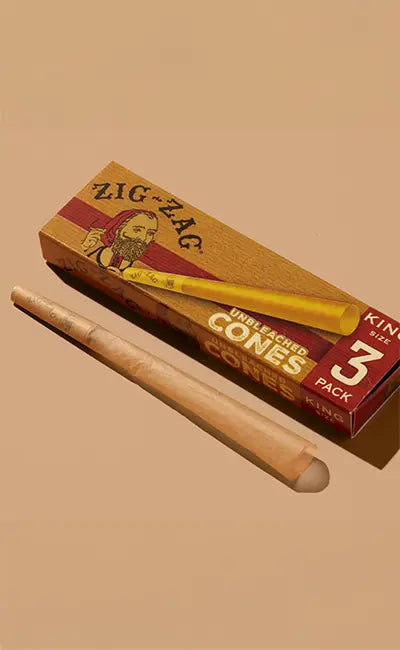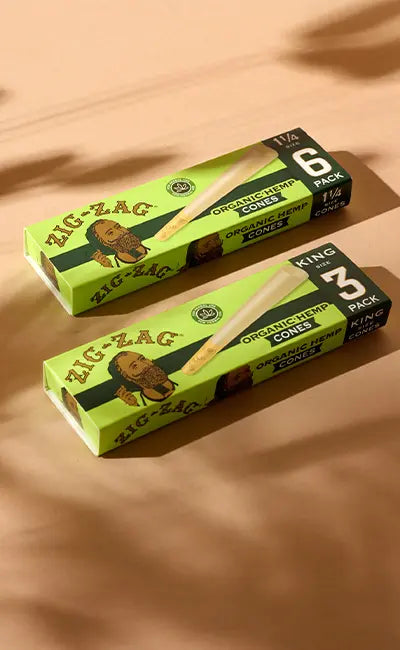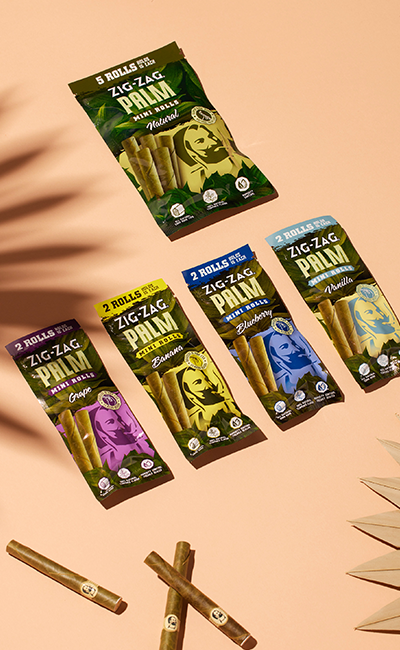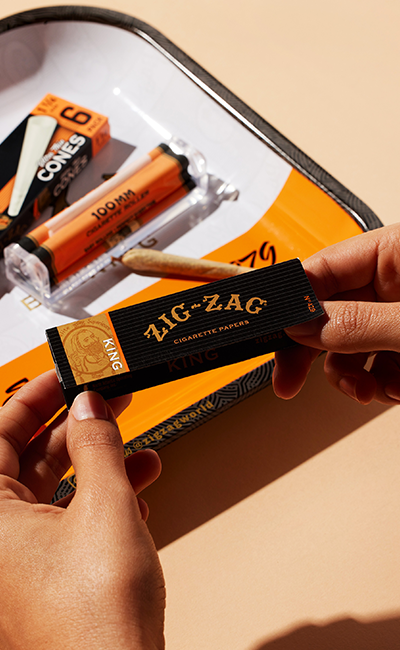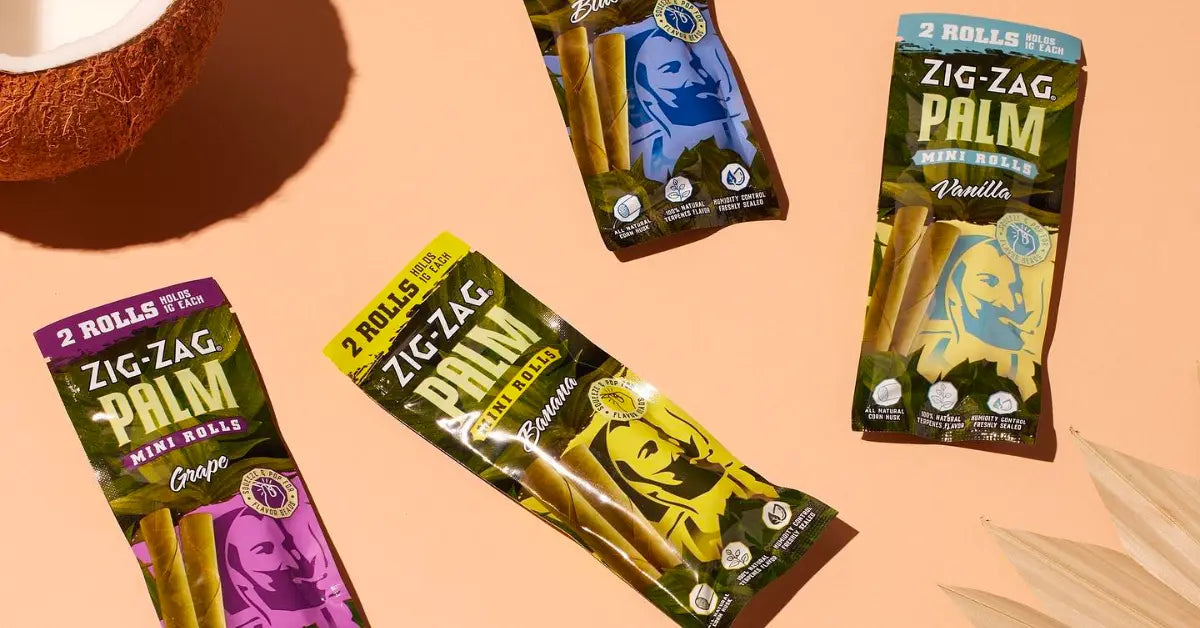Rolling papers have been a staple in the smoking industry for centuries, evolving to meet the diverse needs of smokers. These thin sheets used to encase tobacco or other substances play a critical role in the smoking experience. They come in various materials, each offering unique characteristics that affect the burn rate, flavor, and overall enjoyment. As smoking habits and preferences have evolved, so too have the
types of rolling papers available, leading to a wide range of choices for consumers.
Exploring the Variety of Rolling Papers
The selection of rolling paper material is a crucial consideration for smokers, with each type offering a unique set of benefits and influencing the overall smoking experience. Beyond the commonly known rice, hemp, and wood pulp papers, there are also less traditional materials like flax and bamboo. Rice papers are prized for their thinness, contributing to a slow, even burn that allows for the nuanced flavors of the smoke to come through. In contrast, wood pulp papers, being thicker and more robust, provide a faster burn, making them a go-to choice for those seeking convenience and ease of use.
Hemp papers have gained popularity for their eco-friendly nature and balanced properties. They offer a moderate burn rate and are durable enough to handle without tearing easily, making them a favorite among environmentally conscious smokers and those who prioritize a cleaner smoking experience. Flax and bamboo options further diversify the market, each bringing its own unique texture and burn qualities to the table.
Burn Rate and Its Impact
Understanding the burn rate of rolling papers is essential for smokers who wish to tailor their experience to personal preferences. The burn rate not only determines the duration of the smoking session but also significantly impacts the smoothness and flavor of the smoke. Thinner papers, such as those made from rice or hemp, are celebrated for their slower burn rate. This characteristic not only extends the pleasure of smoking but also ensures a more uniform and consistent burn, reducing the likelihood of canoeing or uneven burns that can detract from the experience.
Conversely, papers made from wood pulp tend to burn faster. This quicker combustion can be advantageous for those seeking a brief session or who prefer the convenience of a faster smoke. However, the increased burn rate can sometimes lead to harsher smoke, potentially overwhelming the natural flavors of the smoking material.
Identifying the Best Rolling Papers in the Market
When it comes to selecting the
best rolling papers for your needs, various factors come into play. Each smoker has unique preferences, and understanding these key aspects can help you find the perfect match. Here’s a detailed guide to help you navigate through the options:
-
Quality: The cornerstone of a great smoking experience lies in the quality of the rolling papers. Premium rolling papers are typically made from natural materials such as hemp, rice, or flax, which burn more cleanly and evenly than their lower-quality counterparts. These materials are less likely to contain chemicals and additives, reducing the risk of inhaling potentially harmful substances. High-quality papers also tend to be more resilient, which can prevent tearing and ensure a smoother rolling process. Opting for papers that prioritize natural ingredients will significantly enhance both the safety and enjoyment of your smoking sessions.
-
Flavor Impact: The type of rolling paper you choose can significantly affect the flavor of your smoke. Flavored rolling papers are available for those who enjoy a hint of additional taste, which can range from fruity to minty or even chocolate, adding a novel twist to the smoking experience. However, for purists who prefer to taste only their smoke, unflavored papers are the best choice. These papers are usually very thin, minimizing their taste impact and allowing the natural flavors of the tobacco or herbs to come through more strongly. The choice between flavored and unflavored papers largely depends on personal taste and the desire to either complement or purely enjoy the natural flavor of the smoked substance.
-
Ease of Use: Especially for those new to rolling or those who value convenience, the ease of use of rolling papers is a vital factor. Thicker papers, often made from wood pulp, are more forgiving during the rolling process and tend to hold their shape better, which can be particularly helpful for beginners. These papers are less likely to crinkle or tear, reducing waste and frustration. However, for more experienced smokers who can handle delicate materials, thinner papers made from rice or hemp might be preferable, as they offer a cleaner taste and better burn rate but require a more careful touch.
Whether you're a beginner or an experienced smoker, these factors will guide you in choosing papers that align with your preferences and enhance your smoking sessions. Remember, the
best rolling papers are the ones that perfectly match your smoking style and ethical considerations.
In-Depth Analysis of Hemp Papers
Rise in Popularity
The recent surge in the popularity of hemp papers is largely attributed to growing environmental and health consciousness among smokers. Hemp, as a rapidly renewable resource, presents an eco-friendly alternative to traditional paper sources. It requires minimal pesticides and water to grow, making it a sustainable choice. From a health perspective,
hemp rolling papers are often free from harmful chemicals and additives, offering a cleaner smoking experience. This shift towards hemp smoking papers reflects a broader trend in consumer behavior that favors sustainable and health-conscious products.
Health Implications of Different Paper Types
Traditional rolling papers, which vary widely in their composition, often incorporate chemicals and additives during their manufacturing process. These substances, introduced to enhance the paper's burn rate or appearance, can inadvertently pose health risks to users. As smokers become increasingly aware of these potential hazards, the demand for cleaner, safer alternatives has grown.
Enter hemp papers, a standout in the realm of smoking materials for their health-conscious attributes. Crafted from the hemp plant, these papers are celebrated for their all-natural composition. As said before, unlike their traditional counterparts, hemp papers are free from harmful chemicals and additives, aligning with the preferences of health-oriented smokers. This characteristic not only minimizes the intake of unwanted substances but also provides a purer smoking experience, letting the true flavor of the smoke shine through.
Benefits of Slower Burning Rate in Hemp Papers
These are highly valued in the smoking community, particularly for their slower burning rate. The slower burn rate of hemp papers is not just a matter of preference, but it brings tangible benefits of hemp papers to the smoking session. Here are some key advantages:
-
Even Burning: One of the standout features of hemp papers is their ability to burn more evenly than many other types. This consistent burn reduces the common frustration of having to relight the paper or manage uneven burning, which can spoil the experience. An even burn ensures that the smoking material is used efficiently, providing a smooth and uninterrupted smoking session. This consistency is particularly appreciated by enthusiasts who value a seamless and predictable smoke.
-
Temperature Control: The slower burn rate of hemp papers typically results in cooler smoke, which is a significant benefit for those sensitive to heat and harshness. Cooler smoke tends to be gentler on the throat and lungs, making the smoking experience more comfortable and enjoyable, especially for frequent smokers or those who are just beginning. Additionally, by lessening the irritation and discomfort that smoking can occasionally cause, this feature can contribute to a more enjoyable and long-lasting habit.
-
Flavor Preservation: Hemp papers contribute significantly to flavor preservation by burning slower. This slow combustion process allows the natural flavors and aromas of the smoking material to be released gradually and savored with each puff. The preservation of these flavors results in a more authentic and enjoyable taste experience, enabling smokers to fully appreciate the subtle nuances of their chosen herbs or tobaccos. This aspect is particularly valued by connoisseurs who prioritize the quality and purity of flavor in their smoking sessions.
These advantages of hemp papers are a popular choice among smokers who value a quality smoking experience. The combination of efficiency, comfort, and flavor enhancement that comes with using these can significantly elevate the overall enjoyment of your smoking sessions.
Cost-Effectiveness and Longevity of Papers
Cost-effectiveness and longevity emerge as crucial considerations. Traditional rolling papers, with their lower price point and broad availability, present an attractive option for those seeking both convenience and economy. These papers satisfy the immediate needs of casual and frequent smokers alike without straining the wallet. However, the allure of traditional papers' affordability is balanced by the advantages offered by hemp papers. Despite their slightly higher initial cost, hemp papers are distinguished by their robustness and a slower burn rate. This not only enhances the smoking experience by providing a more even and prolonged burn but also translates into more judicious use of smoking materials. Over time, the reduced consumption of herbs or tobacco can lead to savings, potentially offsetting the higher purchase price of hemp papers.
Environmental Considerations in Paper Selection
Impact of Rolling Paper Choices on the Environment
The environmental impact of the best rolling papers for smoking is an increasingly important consideration for many smokers. Traditional rolling papers, depending on their source materials and manufacturing processes, can have a varied impact on the environment. For instance, papers made from wood pulp may contribute to deforestation and have a larger carbon footprint. On the other hand, papers made from sustainable resources, like some organic materials, have a lesser environmental impact.
The Role of Organic Hemp Papers
As emphasized before, hemp cultivation is known for its low environmental impact – it requires less water and pesticides compared to traditional crop farming. Furthermore, hemp plants have a high carbon absorption rate, making them beneficial for the environment. The production of
organic hemp papers aligns with eco-friendly practices.
Promoting Sustainability in the Smoking Industry
Promoting sustainability in the smoking industry is not just about choosing eco-friendly papers; it's also about supporting brands and manufacturers that prioritize environmental responsibility. This can include using renewable energy in production, minimizing waste, and using eco-friendly packaging. By making informed choices, smokers can support and encourage sustainable practices, contributing to a larger positive impact on the environment.
Making the Right Choice: Selecting the Appropriate Paper Type
Factors Influencing Paper Selection
When choosing between rolling papers and hemp papers, it's essential to consider individual smoking habits and preferences. The decision should be based on factors such as desired burn rate, flavor preferences, health considerations, and environmental impact. For those who prefer a quick and intense smoking experience, traditional rolling papers might be more suitable. Conversely, smokers seeking a slower, more flavorful session may lean towards hemp papers.
Assessing Quality in Paper Selection
Evaluating the quality of rolling papers is crucial for optimizing your smoking sessions. High-quality papers not only make the act of smoking more enjoyable but also enhance the overall session through reliability and performance. Here are some indicators to consider when selecting rolling papers:
-
Durability: High-quality rolling papers are designed to withstand the rigors of rolling and the heat of burning without tearing. Durability is essential because it ensures that the paper maintains its integrity from the start of your session to the end. This reduces the likelihood of interruptions caused by breaks or tears, leading to a smoother and more satisfying smoking experience. When assessing durability, consider the paper's thickness and material composition as these can significantly influence its strength.
-
Cut and Texture: The precision of the cut and the uniformity of the texture across rolling papers can greatly affect how easily they can be handled and rolled. Papers that are cut precisely to size help ensure consistent performance and prevent waste, while a uniform texture aids in an even burn, contributing to a consistent flavor and experience. Checking the cut and texture before purchase can prevent issues such as uneven burning, which can detract from the smoking experience.
-
Absence of Defects: Good quality rolling papers should be free from any defects such as tears, creases, or irregularities. Defects in the papers can lead to uneven burning, difficulty in rolling, and overall a less enjoyable experience. When selecting papers, inspect them closely for any signs of poor manufacturing or handling that could impact their performance during use.
-
Brand Reputation and Community Feedback: The reputation of a brand and the feedback from the smoking community are invaluable in assessing the quality of rolling papers. Well-regarded brands typically maintain high standards in their products. Community feedback, especially from experienced smokers, can provide insights into how the papers perform under different conditions and how much they influence the flavor of the smoke. Engaging with community reviews and forums can guide you toward making a more informed choice.
By paying attention to these key indicators, you can choose rolling papers that will enhance your smoking sessions, ensuring that each smoke is as enjoyable as possible. These elements help safeguard against common issues, improving both the practical and pleasurable aspects of smoking.
Balancing Health, Experience, and Environmental Impact
If health is a primary concern, opting for natural and chemical-free hemp papers is advisable. For those prioritizing the smoking experience, the choice may depend on the desired burn rate and flavor profile. Lastly, for environmentally conscious smokers, hemp and other organic papers stand out as sustainable choices. Balancing these factors will guide you in making a choice that aligns with your values and preferences.

Ultimately, this comparison aims to empower smokers to make informed decisions about their paper choices. Understanding the characteristics, advantages, and limitations of different types of papers allows smokers to align their choices with their priorities and values. Whether it’s the traditional experience of rolling papers or the natural and sustainable attributes of the best hemp papers, the decision should enhance your smoking experience while aligning with your health and environmental consciousness. By considering all these aspects, smokers can make a choice that not only satisfies their immediate needs but also contributes to their overall well-being and the health of the planet.






